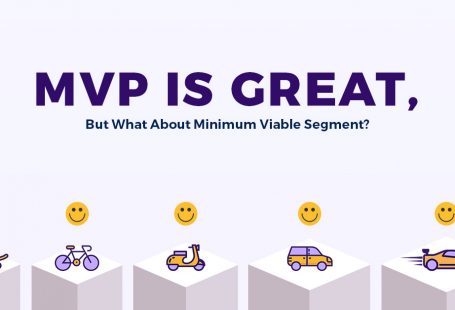The foundation of a successful company is based on two aspects, namely, the rate of customer acquisition and the rate of customer retention. Ideally, the latter should be as good as possible, which enhances a company’s brand value and thereby improves the former.
Just envisage your company as a bucket of water, where water embodies your customers. As no business is perfect, let’s assume your bucket is leaky and there is a constant loss of water. In other words, a constant loss of customers, sales, and revenue.
A natural response is to fill up the bucket as much as you can. After all, no water, no business!
How leaky is your bucket?
You need to be honest while sizing up the holes on your bucket.
-
At what rate the water (customers) is pouring out?
-
Does the bucket have few holes only, therefore letting water (customers) leak gradually?
-
Is the bucket perforated with many holes, allowing the water (customers) to leak rather quickly?
No matter what the nature of your business is, you must consider the above questions, to achieve sustainable growth.
The key is to retain as many customers as you can
Besides relentlessly acquiring customers, you need to retain the existing ones. You need to learn the art of customer retention.
If you add customers as if there is no tomorrow, but you don’t have customer retention strategies, you will end up losing in the long run.
Your understanding of customers’ usage patterns plays a crucial role in customer retention.
Once customers’ behavior and usage patterns are mapped, you can figure out the way to push new products or services to customers. Whether you want to inform your customers via emails or via push notifications.
The idea is to make customers habitual of your products or services, so that they don’t switch to something else.
It’s important to keep them hooked onto your product or service. You can create retention loops so that they keep coming back to your offering.
In this regard, the Hook Model is highly effective. It positively influences customer behavior and develops in them, a natural inclination towards your product. The best part of the model is, it doesn’t rely on costly advertising or aggressive marketing campaigns.
It’s a four-step process which includes:
- Trigger
- Action
- Variable rewards
- Investment
You need to turn your product into an essential element for your customer. It must influence their lives on a daily or weekly basis. A good retention rate reflects greatly on your brand value. This, in turn, can help you create stronger acquisition loops.
But before we move on to find the ways to fix a leaky bucket model. Let’s first analyze the ways you can use to identify the leaks in your funnel.
You can enhance your customer retention rate by using the three funnel-related reports offered by Google Analytics, namely:
- Funnel Visualization Report:
The process is Funnel visualization < Goals < Conversions. It is one of the most basic reports displaying your funnel’s overflow once you point out a specific goal.
- Goal Flow Report:
The process for this particular report goes like this: Goal Flow < Goals < Conversions. This is the correct path to track conversion. Moreover, it is better in terms of flexibility than funnel visualization as it allows you to utilize the date comparison and advanced segments.
- Reverse Goal Path Report:
The process to this funnel-related report is Reverse Goal Path < Goal < Conversion. This will visually display you the actual funnels, some of which you were never even aware of. Essentially, you will be able to check out the three pages your users visited before converting.
Once you review these reports, you will gain a better understanding of your customer retention model. These reports will allow you to figure out “the point” your user is falling out of your funnel. These are the “leaks” you have to fix. To maximize your conversion rate, these fixes are to be made as soon as possible so that your funnel can acquire more and more visitors.
With the reports presented above, you would be able to identify the problem in your funnel quickly. But how do you aid them?
There are two ways you can find the leaks in your bucket; you must have heard of and used both of them at certain stages of your life, as they’re appropriate for almost everything- Quantitative and Qualitative research!
The deeper to move into your funnel, the more would be the impact of your plug leaks. A little increase in your conversion rate will go more in-depth at the bottom of the funnel compared to the top. Therefore, it is smarter to work in an ascending manner.
The Quantitative Research:
Quantitative research is based on numbers and figures. It is targeted at understanding the “what” of the behavior of your customers and visitors. In the leaky bucket theory, where the focus is on customer retention optimization, the quantitative research is done with one of the following four methods:
- Technical Analytics
- Form Analytics
- Heatmaps
- Technical Deep Dive
Technical Analytics:
Segmenting your audience based on the technology they’re equipped with is always a good idea.
Say, for example, most of your visitors access your website with the latest smartphone. However, you can not assume that all of your visitors will have the most recent technology in hand. Some may still be using a Motorola Razor manufactured in 2005.
Technical analysis is done to accommodate all types of users that may or may not fit into your “general idea” of visitors.
It primarily works at three core concepts, namely:
- Cross-browser and cross-device testing: It is done to ensure your website functions correctly and similarly on as many devices and browsers as possible.
- Mobile Optimization: It involves customizing the website to run efficiently on almost every screen size (mobile or desktop).
- Page Speed Optimization: You need to ensure the page loads within 3 seconds, else many users may dive off somewhere else.
Form Analytics:
If you have integrated a form on your website, whether it is a primary lead generation form or a proper checkout form. You must consider it one of the crucial elements of increasing the conversion rate. A form builds a connecting path that helps a consumer initiate communication with a company. The deeper you understand about the interaction, the better will be the customer retention model.
You can choose a form analytics tool such as Formisimo to find answers to essential questions like:
- Which form fields are people reluctant to fill?
- What area in the form causes the most error messages?
- Which fields are often left empty?
The collected data can help you reduce the friction rate while optimizing your conversion rate.
Heatmaps:
Heat Maps represent the data visually by displaying the values with the help of colors.
Most tools display high values in warm colors such as yellow, red, orange. At the same time, low values are demonstrated by cool colors such as blue and green.
You can use heatmaps to identify the “area” you need to pay extra attention to.
Analytics Deep Dive:
If you are using a pre-built setup, you can take a break to relax. However, if you are using something like Google Analytics, which requires you to set it up correctly, it’s a task.
You can not guess how convenient it is to set up the analytic tool wrong.
Before you dive into deep analytics, make sure you find the answers to all the questions mentioned below:
- Is all needed data collected?
- Is the data we have accumulated reliable enough?
- Is anything in the funnel broken or incorrect?
Once you have collected the relevant data and not wasting any time on misguided data, you can dive in to deeply understand how your users and visitors behave.
The Qualitative Research:
Qualitative research is subjective and exploratory. Unlike quantitative research, it focuses on the “why” of customer behavior.
In terms of conversion rate optimization, one of the following methods are often used to conduct qualitative research:
- Customer interviews
- On-site surveys
- User testing
- Session replays
Customer Interviews:
Nothing compares to actually having a proper conversation with your consumers. If you call up your consumer and ask about their experience, it will provide you with an in-depth understanding of their likes and dislikes.
If you can meet them up, even better!
However, if you plan on taking the route of conducting qualitative research with customer interview, you have to make sure to:
- Recruit the right participants
- Ask relevant questions
- Document each interview properly.
On-site Surveys:
You may be aware of on-site surveys. These surveys pop up as you browse through various websites and ask you generally one or a few quick questions.
There are majorly two kinds of on-site surveys:
- Exit Surveys: These are activated once a visitor starts to show an exit intent, such as moving around the taskbar of the browser.
- On-Page Surveys: These surveys pop up when a visitor visits a page, either immediately or within 30 seconds of the visit.
All surveys aim to gather relevant data about the user’s experience so that the conversion funnel doesn’t get in the loop suggested by the leaky bucket theory.
User testing:
User testing refers to the process of generating instant feedback by letting real people perform tasks on your website while they narrate their experience out loud.
This often proves to be of utter use as you may fail to recognize your website’s weaknesses and faults since you are emotionally invested in the project. Watching someone entirely unfamiliar interact with your website is often enlightening for an entrepreneur.
Session Replays:
Session replays are very similar to user testing. However, it doesn’t involve your “planted people.” The users interacting with your website in this qualitative research method are actual people with actual money and an intent to make a purchase.
You will be able to watch these visitors navigate through your website, minus the narration.
With this method, you can understand the following factors:
- What are the areas of pain for them?
- Where do they pause frequently?
- What do they face trouble finding?
- What makes them frustrated?
- What confuses them the most?
- What makes them give up and leave?
This type of research requires excellent note-taking skills. However, once you can find out these pain points, you can most definitely optimize your customer retention model.
Now that you know “how” to find the “what” and “why” of your user’s behavior, you can move on to permanently fixing your leaky bucket.
However, as an entrepreneur, you might be wondering what should be the “ideal budget” to solve this problem.
Let us tell you!
Cost of filling Up Leaky Buckets?
Rarely there are companies that are unaware of their shortcomings. They know the bucket is leaky and yet they try to fill it up continuously to compensate for the regular loss of customers.
It can cost 5x more to bring in new customers than to retain the existing ones. Still, companies exhaust their resources just to keep the bucket full at all times and lose their viable customers in the process.
Such a strategy is taxing and business teams tend to wear down rather quickly.
Fixing The Leaks
Customer churn is something that wears down every organization if leaks in the bucket are not fixed in a timely manner. The idea is to identify the holes and put a lid on them once and for all. It’s like giving your bucket a brand new body, having no leaks whatsoever.
It’s never a bright idea to go for patchwork. You need to be pro-active and seek concrete solutions to reduce customer churn and leakage. Customers can always differentiate between damage-control measures or half baked solutions and meticulously planned strategies. This makes customers question your will and intention, which doesn’t fare well in the long run.
Even for a business team, it’s not easy to come up with quick fixes every now and then. Fixing an issue temporarily and facing it, again and again, may wear down any team for the matter.
One of the better ways is to build a brand new bucket. In other words, going back to the drawing board and coming up with strategies that are entirely new.
Another prudent approach is to identify the pain points of the customers who left or are on the verge of leaving. Is every hole in the bucket caused by the same reason? Or Does every ‘hole’ in the bucket has an exclusive reason?
Though tedious but it’s always better to go from individual to individual and determine the respective cause behind the leak.
Ways to permanently fix the leaky bucket model:
1. Customer Journey Mapping
A customer is not a static entity and has his/her own journey to traverse in an organization. You need to understand and trace this journey from start to end.
Is that journey or flow logical and streamlined?
Does that journey provide a consistent and fulfilling experience to that customer?
Such questions can help you understand your product’s relevance and seamlessness of your system. This is how you can create value for your customers and deepen your engagement.
2. Customer Segmentation
Segmentation can streamline your effort to retain customers.
If you can categorize your customers into service or market groups, you can create specific strategies to retain suitable customers. You can read here.
Segmenting customers means that you segment service delivery as well. It helps in utilizing your resources prudently, in case they are limited.
3. Loyalty Programs
At times, you need to recognize people’s loyalties. The classic way is to reward them for their investment in your product.
Therefore, you must ascertain the objectives, positioning, and values of your loyalty programs. Your loyalty programs should relevant to the needs of your customers.
Moreover, the redemption process shouldn’t be tedious or complicated.
This is how you can guarantee a successful loyalty program.
4. Customer Win-Back
The story doesn’t end if a customer leaves, or at least you shouldn’t let it end there.
Make efforts and reach out to that customer. Listen to his/her side of the story. Explain to them about the changes you have made since their departure.
Not just that, you can sit with them and tell them about your vision and future plans. Tell them about your improved loyalty program and get them back on board.
We hope this write gave you valuable insights and guidance regarding customer retention. If you want to dig deep into it, then you can read our another write-up on User retention. Do share your views and queries in the comment section.



